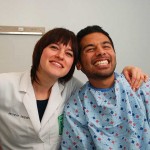HHS Grants Bolster Health Care and Public Health Disaster Preparedness
The Department of Health and Human Services has awarded more than $971 million to continue improving preparedness and health outcomes for a wide range of public health threats within every state, eight U.S. territories, and four of the nation’s largest metropolitan areas.
Administered by the HHS Office of the Assistant Secretary for Preparedness and Response (ASPR), HPP funding supports preparedness for health care systems, health care coalitions, and health care organizations. HHS’ Centers for Disease Control and Prevention administers PHEP funding to support the preparedness of state, local, and territorial public health systems.
For the first time, the HPP and PHEP funds are being awarded jointly, encouraging cooperation between the nation’s health care and public health systems. This change follows a year-long effort by ASPR and CDC to align the two federal preparedness programs. These programs represent critical sources of funding and support for public health and health care preparedness systems.
Improved coordination among federal emergency preparedness programs is a high priority of HHS and other federal entities, as well as for HPP and PHEP awardees. In December 2010, ASPR, CDC, and other federal partners began developing strategies to better align grants with public health and health care preparedness components.
With aligned HPP and PHEP cooperative agreement programs, states and communities can more easily, efficiently, and effectively conduct joint planning, exercising, and program operations. These activities are vital in preparing communities to respond and recover from emergencies and help communities manage health care and public health on a daily basis.
Dr. Lurie noted that as access to health care increases, more Americans are likely to seek care from primary care providers and health clinics to address these day-to-day health issues rather than visiting emergency departments. With fewer people seeking basic care in emergency rooms, hospitals can care for a greater number of patients during emergencies.
